Suppose that the length of a rectangle is 5 and one-third times as long as its width. The area of the rectangle is 1,728 square centimeters. Find the length and width of the rectangle.
A. The width of the rectangle is 18 and the length of the rectangle is 96.
B. The width of the rectangle is 23 and the length of the rectangle is 106.
C. The width of the rectangle is 17 and the length of the rectangle is 16.
D. The width of the rectangle is 20 and the length of the rectangle is 101.
E. The width of the rectangle is 16 and the length of the rectangle is 96.
Answer: A
You might also like to view...
Use the rational zeros theorem to determine the potential rational zeros of the polynomial function. Do not find the zeros.f(x) = x5 - 2x2 + 3x + 10
A. ± 1, ± 5, ± 2, ± 10
B. ± 1, ± 5, ± 2
C. ± 1, ±  , ±
, ±  , ±
, ±  , ± 5, ± 2, ± 10
, ± 5, ± 2, ± 10
D. ± 1, ±  , ±
, ±  , ±
, ± 
The graph of a logarithmic function is shown. Select the function which matches the graph.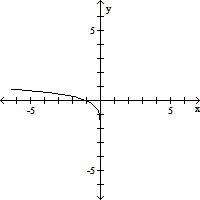
A. y = - log (x) B. y = log (-x) C. y = - log (-x) D. y = log (x)
Graph the quadratic equation by finding and plotting ordered pair solutions.y = -2x2 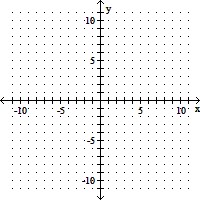
A. 
B. 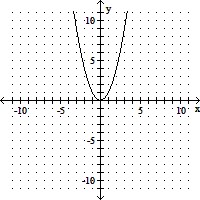
C. 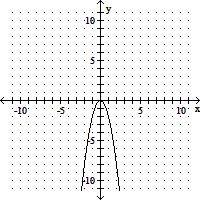
D. 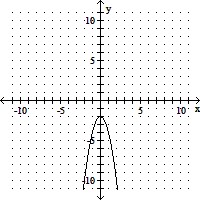
Determine whether the graph is that of a function. If it is, use the graph to find its domain and range, the intercepts, if any, and any symmetry with respect to the x-axis, the y-axis, or the origin.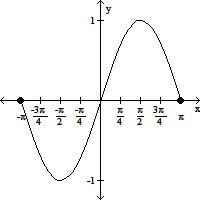
A. function domain: {x|-1 ? x ? 1} range: {y|-? ? y ? ?} intercepts: (-?, 0), (0, 0), (?, 0) symmetry: none B. function domain: all real numbers range: {y|-1 ? y ? 1} intercepts: (-?, 0), (0, 0), (?, 0) symmetry: origin C. function domain: {x|-? ? x ? ?} range: {y|-1 ? y ? 1} intercepts: (-?, 0), (0, 0), (?, 0) symmetry: origin D. not a function